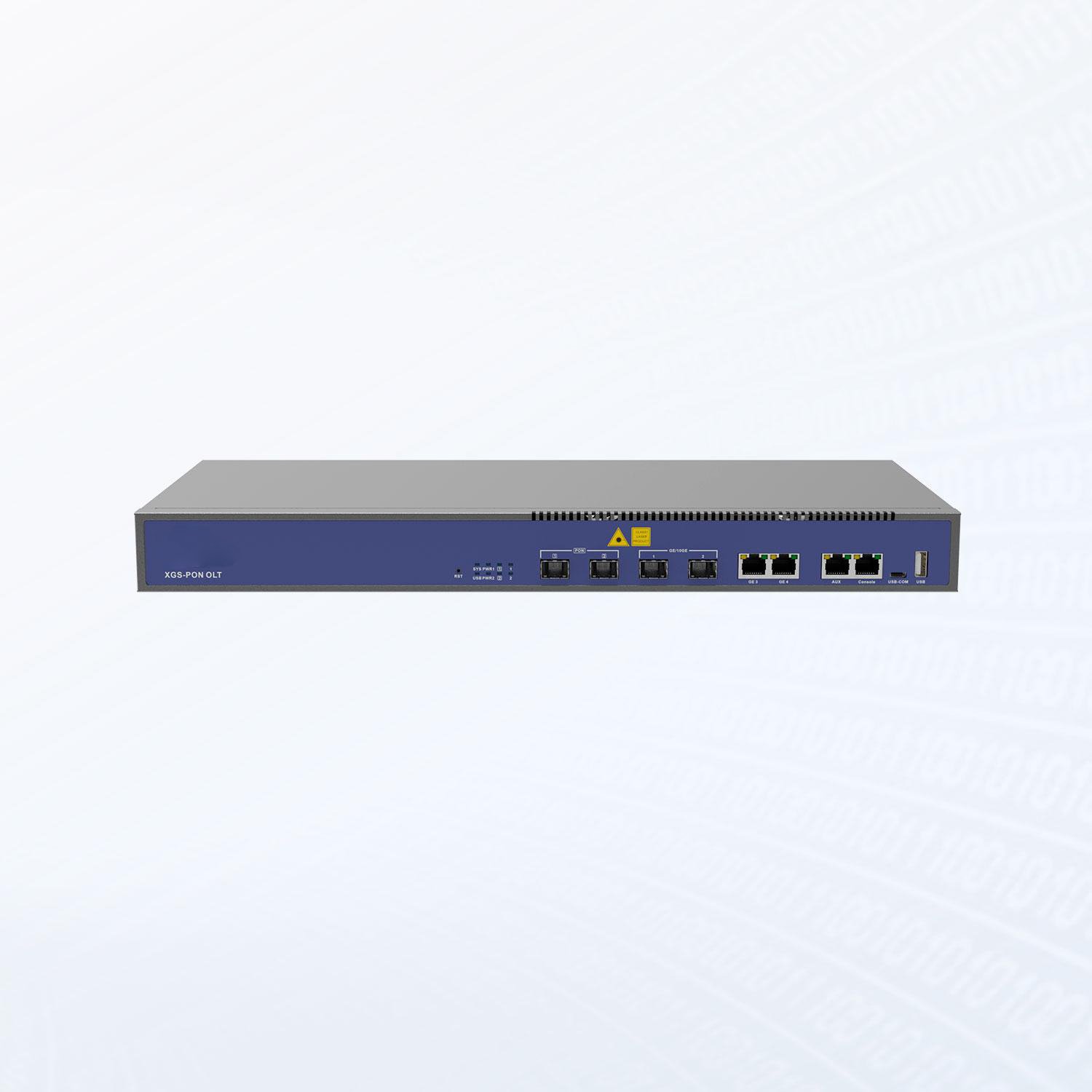The Traffic Hub of the Network World: Demystifying OLT, the “Master Controller” of Your Home Fiber
Have you ever marveled at the smooth streaming of 4K videos, the stability of uninterrupted video conferences, or the instantly loading web pages made possible by the fiber optic cable entering your home? We all know “Fiber to the Home” is fast, but have you ever wondered who, behind that slender beam of light, orchestrates the massive flow of data so seamlessly, delivering the entire world to your screen?
The key to the answer lies in an often-overlooked piece of equipment housed in a server room near your neighborhood—the OLT. Today, let’s pull back the curtain on this crucial device.
I. What is an OLT? A Simple Analogy
Let’s use a city’s transportation system as an analogy:
- Your home fiber network (PON): This is like the city’s road system.
- Your home optical modem (ONT/ONU): This is the private car in each household’s driveway, responsible for sending and receiving data.
- The OLT (Optical Line Terminal): This is the central traffic control center for the entire road system.
This “Control Center” is stationed at the service provider’s central office. It connects downwards to thousands of household “private cars” (optical modems) and upwards to the “information superhighway” (the core network) leading to the global internet.
Its core responsibility is to: Efficiently and orderly manage the “travel” of all data flows, ensuring no traffic jams, no wrong turns, and accurate delivery to their destinations.
II. How Does an OLT Work? A “Conversation” of Light
The technology behind the OLT’s operation is called PON (Passive Optical Network), with the key word being “Passive.” This means the fiber network between the OLT and your home requires no powered intermediate devices; it relies entirely on passive “optical splitters,” which work like exceptionally pure glass prisms. This significantly reduces both cost and potential points of failure.
The communication between the OLT and home modems is ingeniously designed:
- Downstream Broadcast: When data comes from the internet, the OLT acts like a radio station, packaging all data into optical signals and broadcasting them to every connected household. However, each data packet is tagged with a unique “household address” (the modem’s ID). Your home modem “listens” to all signals but only accepts the packages addressed to it, ignoring all others.
- Upstream Time-Division Multiple Access (TDMA): When all the home modems need to send data (e.g., you uploading a file), a potential problem arises – if they all “talk” into the fiber at once, the signals would collide and create chaos. The OLT, as the “Master Controller,” implements a precise time-scheduling mechanism. It assigns each modem a specific, minuscule time slot, instructing them to “line up and take turns.” Your modem only “speaks” and transmits data during its own designated microsecond-long window.
Through this精密 (jīngmì – precise) coordination of downstream and upstream traffic, the OLT elegantly enables two-way communication with numerous households using a single main fiber line—an solution that is both economical and highly efficient.
III. Why is the OLT So Important?
- The Network’s “Main Artery”: It is the starting point and core of the entire optical fiber access network. Its performance and stability directly determine the internet speed and experience for thousands of users. If the OLT “catches a cold,” the entire neighborhood might suffer an “outage.”
- The “Guardian” of Bandwidth: The upper limits of the Gigabit and 10-Gigabit broadband we often talk about are fundamentally defined by the capabilities of the OLT platform. When operators upgrade their networks, they are often deploying more powerful OLT equipment.
- The “Brain” for Management and Control: Beyond forwarding data, the OLT is also responsible for the remote management of all the optical modems connected to it. Service providers can configure, diagnose, and troubleshoot your home modem from their central office, eliminating the need for a technician to visit—greatly improving service efficiency.
- The Foundation for the Future: The evolution from current GPON/EPON to future technologies like 10G-PON, 50G-PON, and beyond, all revolves around advancements in the OLT. It is the foundational infrastructure carrying us towards a smart world of the Internet of Things, enabling applications like 8K video, VR/AR, and smart homes.
Conclusion
The next time you enjoy high-speed internet browsing, picture this: in a server room not far from you, the OLT—that silent yet powerful “Master Controller”—is orchestrating the vast torrents of data at the speed of light, ensuring every single bit of your information arrives safely and promptly.
It may work anonymously behind the scenes, but the OLT is undoubtedly an indispensable, unsung hero in building our modern digital lives.


